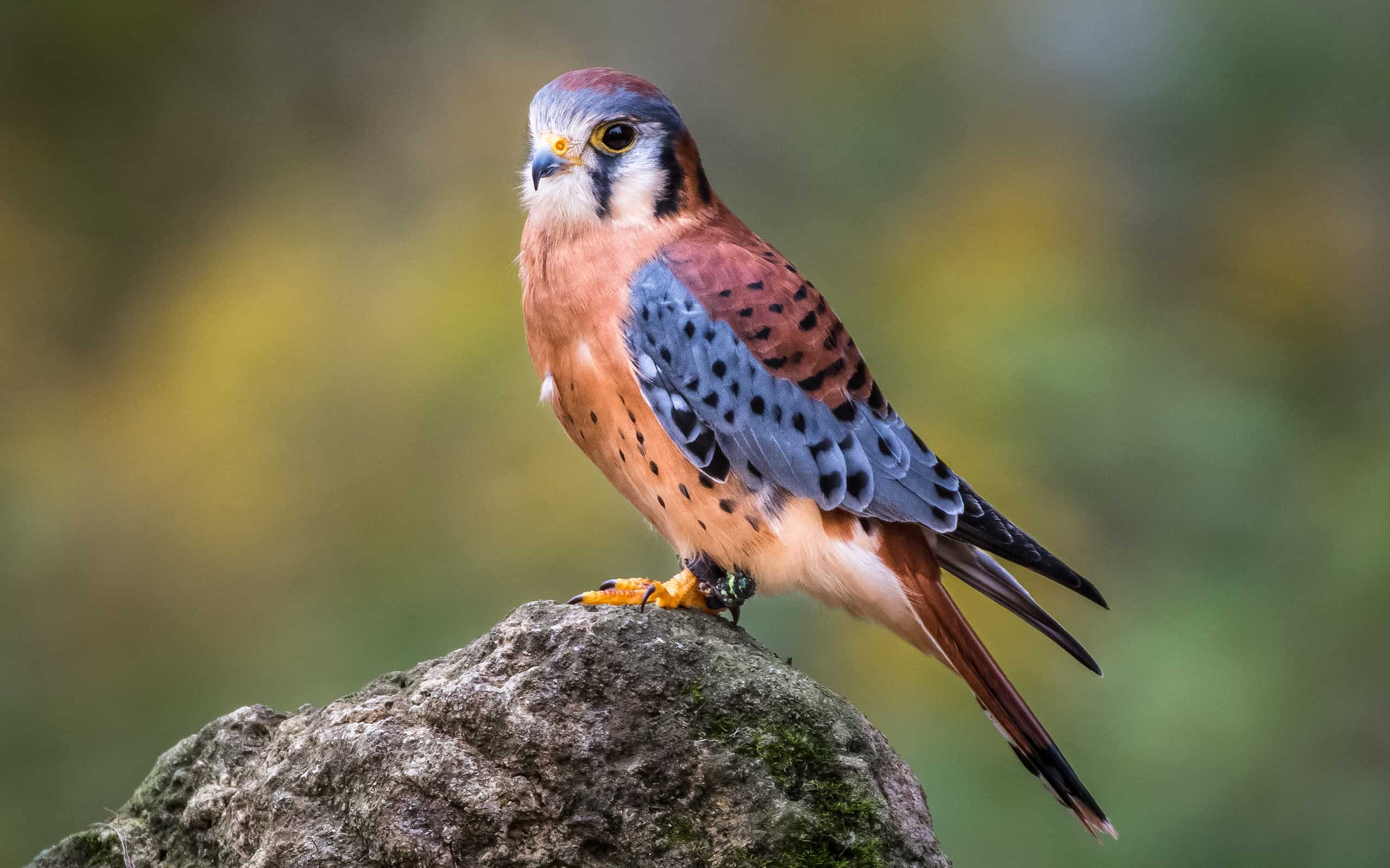It’s hard to deny the magnificence of falcons, some of North America’s most powerful and stunning bird species. Wisconsin is no exception to showcasing its royalty, as many of these species make their kingdom. A closer look at the habitat and habits of Wisconsin falcons will bring a more profound sense of awe at their uniqueness and majesty.
Identifying Falcons (And Are They Hawks?)
Falcons are known for their sleek, elegant silhouette and formidable wings. Many people conflate hawks and falcons, but there are sharp differences. Specifically, hawks are typically larger than falcons and possess short, wide, and rounded wings. Furthermore, they are recognizable by their slender and pointy heads. Falcons, in contrast, own long, slim, sharp wings and a round and short head. They also showcase a notch on their beak known as a tooth (which they utilize to sever the neck of their prey, while falcons typically kill with their unforgiving talons). Falcons tend to be more adept at speed than precision. Hawks are more precise in their hunting routines. Lastly, some hawks have separated feathers on their wings, like eagles.
The Peregrine, Lord of the Hunters
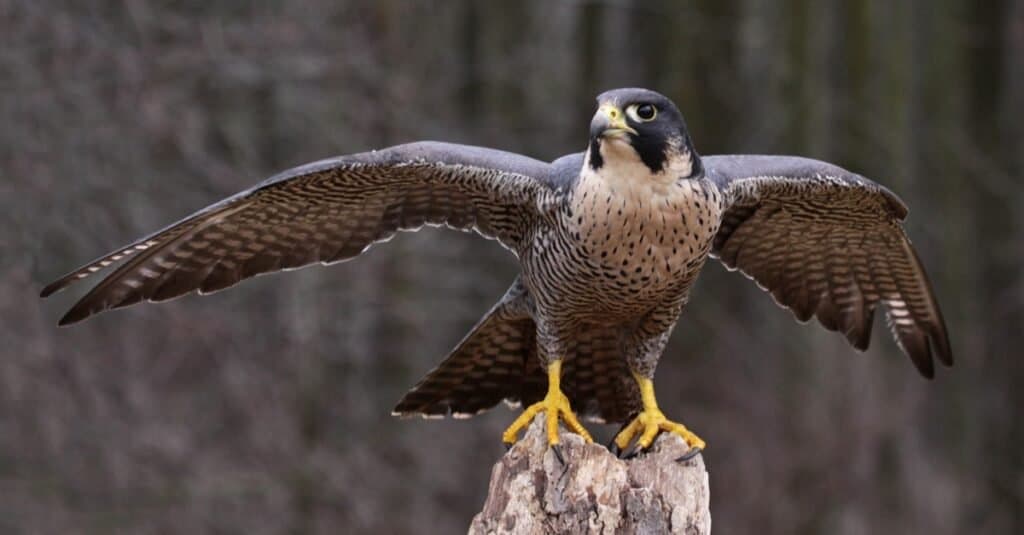
Meet the fastest animal in the world.
©Chris Hill/Shutterstock.com
The second largest Wisconsin falcon is the peregrine. Being number two in size is no problem. It gets the prize as the fastest falcon and the fastest animal in the world! The peregrine is easily recognizable by its dusky blue-gray feathers and white underside. Besides their long wings, peregrine falcons boast a thick neck with black-area heads, distinguished sideburns, and a light, brown breast area on occasion marked with a tiny brown “V” shape.
These animals prefer wider, open landscapes – such as fields or meadows – since they mainly rely on aerial hunting techniques to find their next meal. With impressive measurements reaching up to 25 inches in height and a 45-inch wingspan, it’s easy to understand why they are royalty among avians. Moreover, they possess a unique hunting technique: flying at incredibly high speeds (200 mph) and then making sharp dives toward their target in what’s known as “stoop attacks.”
The peregrine can also gravitate to higher altitudes, including mountains or hillsides with abundant rodent populations. Peregrine falcons are proficient predators. They are capable of hunting virtually any tiny bird or mammal that crosses their keen sight. Their bodies feature a unique design that makes possible fast and effective descents. These features include thin alula feathers that form blades along their wings, which help them easily cut through the air while plummeting toward their next victim.
Sadly, peregrine falcons have been endangered in Wisconsin since 1975. The reason is pesticides weaken their eggshells and thus compromise birth rates.
The Merlin, The Magician of the Falcon Court
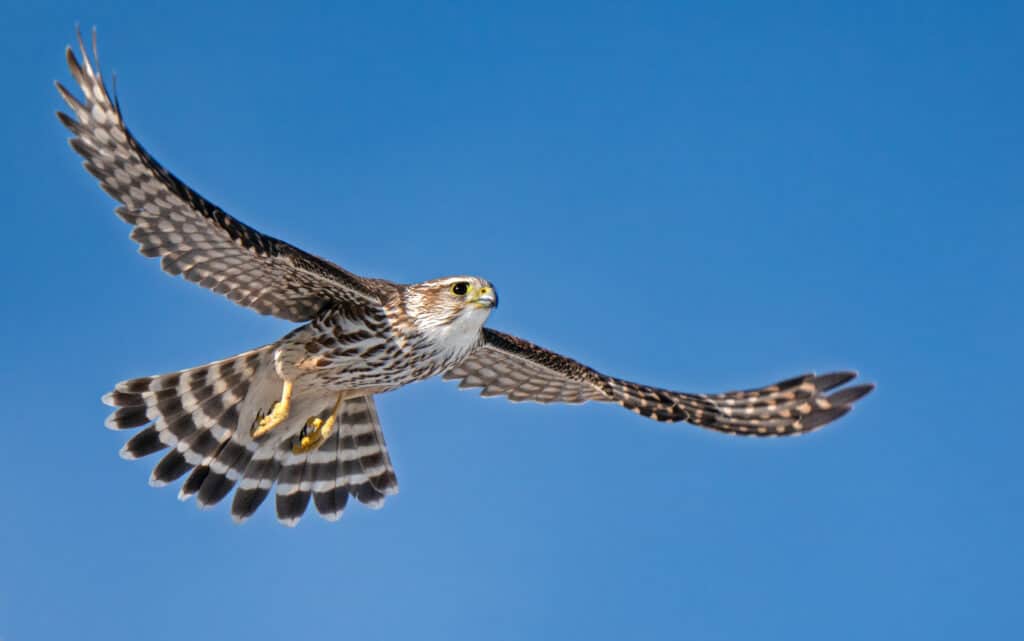
Despite being the size of a
blue jay
, the merlin is a fearsome hunter.
©Rob Palmer Photography/Shutterstock.com
The merlin falcon (magically?) appears like an undersized peregrine. Its back has a slate/bluish-gray color, while its underside ranges from buffy to streaked. It’s famous for its tell-tale “mustache.” Males possess reddish-brown crowns contrasting the female’s brown spotted face on a white background. Despite being more robust and heavily built than other falcons, merlin falcons are about the size of a blue jay (and have been called pigeon hawks because of their size). Their wingspan can reach 25 inches.
This hunting bird is found across Wisconsin in the nesting season, usually in wooded areas or near big lakes and rivers. In winter, they often travel southward to open beaches or grasslands where more space suits their needs. They are agile birds that reach speeds up to 60 mph while chasing their prey – mainly small other flying creatures like sparrows and shorebirds like ducks. They’re famed for plunging into dense vegetation from high above looking for dinner. Because their nests reside on the ground level or low tree canopy, they remain vulnerable to human and other predator interference. Unsurprisingly, conservation efforts have been made by encouraging voluntary restrictions around nest sites and even setting up special boxes with suitable habitats.
The Gyrfalcon, King of Wisconsin and All Other Global Falcons
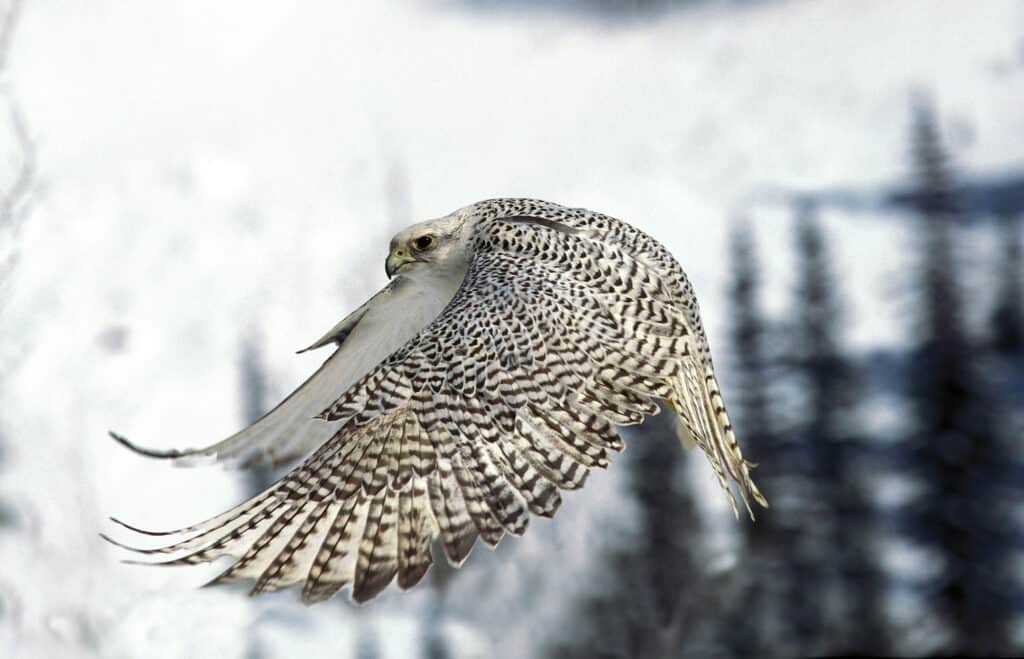
Gyrfalcon can be found even in arctic regions.
©iStock.com/slowmotiongli
Not only does the gyrfalcons get the crown for the largest falcon that makes its kingdom in Wisconsin, but it’s also the largest of all falcons! They can grow up to 2 feet tall and own an unmatched wingspan measuring up to 59 inches. Despite their size, gyrfalcons still hunt small game like ptarmigans or grouse. They brag lush white and gray feathers accentuated with darker wing linings that can be seen high in the sky. This speeder avian can reach dizzying speeds of up to 120 mph. However, for bird watchers, recognizing a gyrfalcon can be challenging. Its coloring can veer from its snow-white countenance to very dark, sooty gray (depending on the location).
Gyrfalcons are common to Wisconsin and the Great Lakes region and even farther north as they are adept at breeding in Arctic climates and thrive in tundra-like landscapes. Yet, in the winter months, gyrfalcons migrate south to find open waters for fishing.
The American Kestrel, Wisconsin’s Smallest Court Member
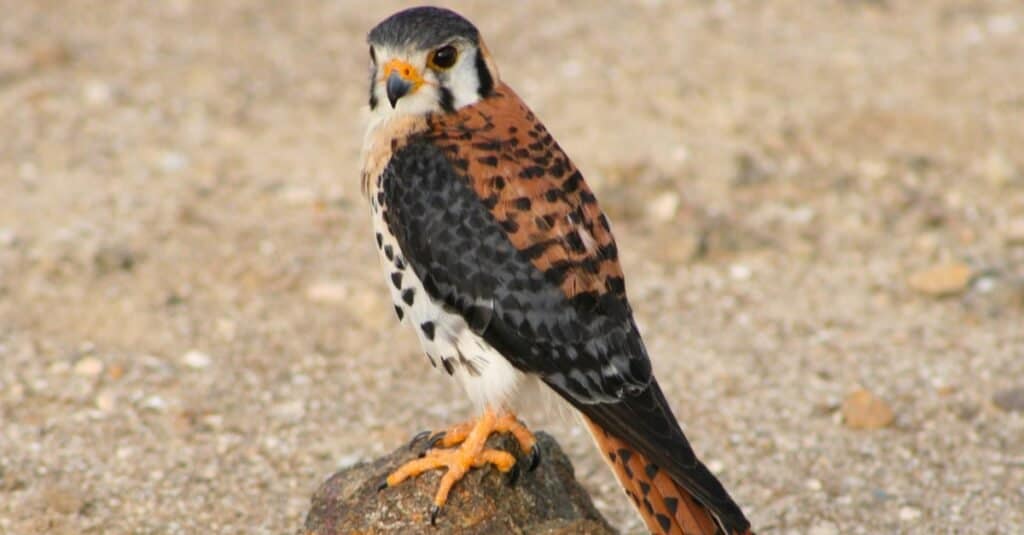
Farmers love it when kestrel falcons nest on their property, as it helps with pest control.
©Megan M. Weber/Shutterstock.com
The last Wisconsin falcon is the least when it comes to size. The smallest in the falcon genus, American kestrels are also known as “sparrow hawks,” grasshopper hawks,” and “killy hawks” because of their size and regular hunting for small birds. They possess a wingspan of 20-24 inches and are about the unimpressive size of a mourning dove. American kestrels are easy to spot with their bright coloration that also includes rust-colored backs and tails, turquoise blue wing coverts dotted in black, and a dark band near the tail’s tip.
Although found across the country – from wetlands to pastures, suburban areas to deserts, forests, or even agricultural land – they usually make their nests in trees or old buildings like barns and silos. Surprisingly, they often settle into birdhouses made for them (farmers tend to love this animal for its critter extermination assistance). American kestrels also prey in open areas, stalking rodents such as mice and voles. In the cold season, like so many others of its Midwest kin, this falcon migrates to southern Wisconsin to leverage the numerous rivers and lakes by searching for fish along its edges.
Sadly and likely making many farmers upset, the American kestrel population has declined by 40% in the last fifty years. The culprits are mainly urbanization and reforestation. The good news is that conversation groups in Wisconsin are attempting to turn the tide.
As seen, the sky is the limit when it comes to falcons in Wisconsin.
Comparing Wisconsin Falcons
| Falcon | Maximum Size | Maximum Wingspan |
|---|---|---|
| Peregrine | 25 Inches | 45 Inches |
| Merlin | 12 Inches | 25 Inches |
| Gyrfalcon | 26 Inches | 59 Inches |
| American Kestrel | 13 Inches | 24 Inches |
Thank you for reading! Have some feedback for us? Contact the AZ Animals editorial team.

